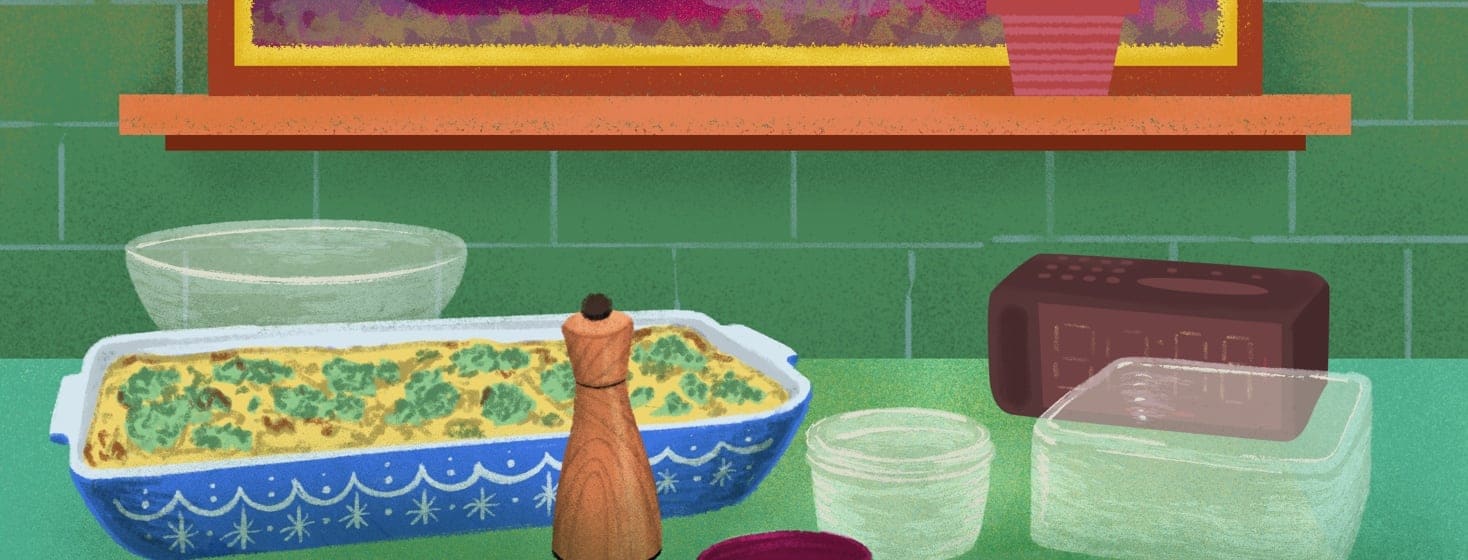Dinner Meal Prep for Your Family and Type 2 Diabetes Management
Dinnertime can be the favorite time of day when family comes together to chat and decompress from the busyness of work and school. But actually getting dinner on the table can be a very different experience.
Having to figure out and then make dinner at the end of the day can be frustrating and stressful. What to make? Do we have all the ingredients? How much time will it take to prepare? What if what I really want to do is sit with my feet up for 10 minutes?
The basics of meal prepping dinner
Meal prepping dinner is one way to diffuse these stresses and make it easier to have a healthy dinner with your family. Meal prepping dinner is a two-step process:
- Prepare a week’s worth of ingredients or meals in advance during single block of time, and
- Put the meal together in advance or just before eating
Why meal prepping dinner is different
What makes meal prepping dinner different from other meals is, depending on your activities and schedule, it can be eaten on-the-go as single servings or at home family style.
For those evenings when there’s sports practice, rehearsals, meetings, or other events going on, having a pre-portioned, healthy dinner packed and ready-to-go works really well. Just like lunch or breakfast at the office or school, grab a serving and eat it on the way. With pre-packed meals, you know you and your family are having a healthy, satisfying dinner. Best of all, you won’t have to face making something once you get home or be tempted to get carryout.
When you’re eating dinner at home family style, meal prepping means that you’ve readied all the ingredients in advance and just need to assemble and heat your dish. Casseroles work really well for this, so do a stir fry of already cut veggies and marinaded protein. Some people put all of their ingredients (fresh, canned, etc.) for dinner in a plastic bin, essentially making their own meal kit.
With both approaches, you decide in advance what to make. The menu is what you’ve chosen based on what tastes good to you and works best with your type 2 diabetes. With meal prepping it’s easier to consistently eat healthfully. There are no last-minute decisions. You don't end up cooking based on what you happen to find in the fridge or how much energy you have left at the end of the day.
Meal prep dinner ideas for better type 2 diabetes management
Some recipes work better with advanced preparation than others. These include recipes with ingredients that stay fresh after being cut up, recipes that can be served hot or cold, and recipes that can easily be reheated.
Here are a couple of ideas to get you started thinking about what to prepare for dinner.
Make a meal in a bowl. Bowls, sometimes called buddha bowls, are a mixture of pre-cooked whole grain, roasted vegetables, and protein served with a dressing. Using different dressings can provide variety even when the ingredients stay the same from bowl to bowl. They can also be served cold or hot depending on your preference.
Pop a casserole in the oven or microwave. Choose casseroles that use low-carb vegetables or whole grains as their base. Casseroles provide ultimate flexibility when it comes to preparing meals in advance. You can assemble all the ingredients in a baking dish and either store it in the fridge or freezer until baked, or bake the casserole in advance and reheat it before eating. Precooked casseroles can also be portioned out in advance to make single servings or served family-style.
Put the stew or chili pot on. Stews and chilis provide filling meals that are particularly satisfying when the weather turns frigid. Legumes in a stew or chili provide a high-fiber source of protein. They can also be chocked full of highly nutritious, low-carb vegetables. Depending on your schedule you can put the pot on the stove and let it simmer for hours during your meal prep day or you can get similar results in a fraction of the time using your quick pot.
Success tips for dinner time meal prep
Consider the benefit(s) of meal prepping dinner upfront. Meal prepping dinner can help you eat healthy more consistently, save you time, and/or save you money. Or it can just feel like one more thing to do in an already full schedule. Get clear on what you want out of preparing dinner in advance and set up your routine to deliver on that expectation.
Think about variety for your family's preferences. Making a single dish that everyone likes can be challenging. Even though meal prep can be made into single servings, the idea isn’t to end up cooking a different dish for each person. Think about changes you can make to a recipe that avoids ingredients some family members won’t eat or matches the flavor others want.
Consider the season. No-cook dinners served cold, like bistro boxes, are perfect for hot summer evenings. A hearty stew or chili is more suited to cold winter nights.
Mix it up from one week to another. Tacos every Tuesday can provide some predictability. But it can also start feeling like you’re in a rut. Make something new or different each week to keep dinner interesting. Or else you might find yourself skipping the dinner you prepared for something more enticing and not necessarily as healthy.
Dinner meal prep supports more than physical health
Having a healthy dinner with your family does more than just provide good nutrition. Dinner together provides an opportunity to reconnect and de-stress. It elevates mood and supports mental well being. Meal prepping makes these benefits available to you and your family without all the hassle that comes with having to make dinner every night.

Join the conversation